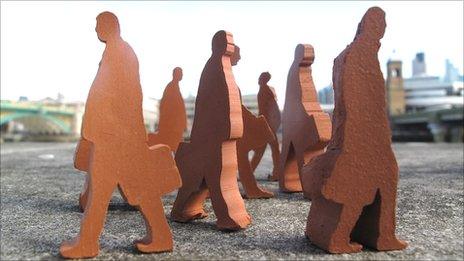Artists get fired up in historic Stoke ceramics factory
- Published
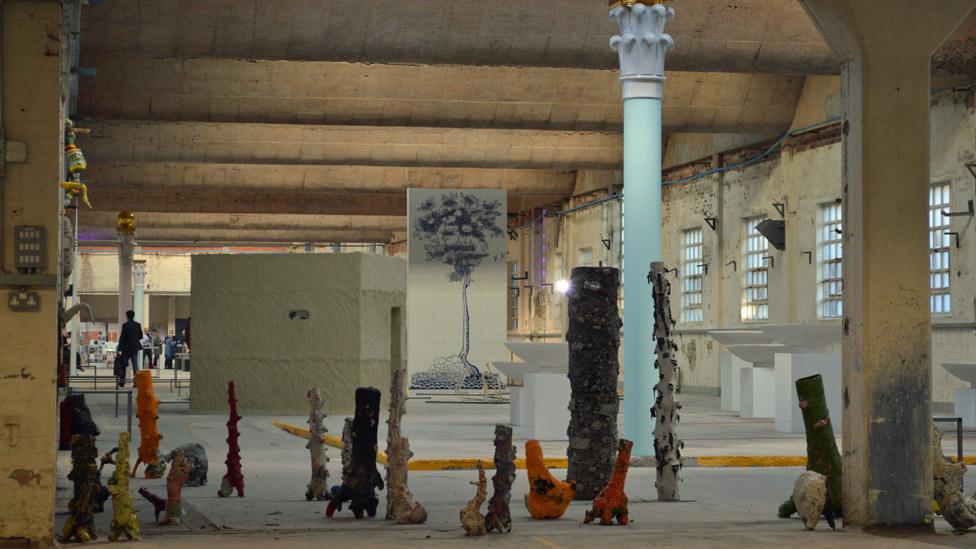
Twelve artists are taking part in the biennial's £5,000 award competition
The famous Spode factory made fine china in Stoke-on-Trent for 241 years until it closed in 2008. Now it has been filled with ceramics once again - this time by artists who have reinvented traditional pottery to make 3D printed porcelain, giant clay heads and tumbledown terracotta vases.
More than 75 artists are taking part in the fourth British Ceramics Biennial, which has taken over the Spode factory, where Josiah Spode perfected the formula for bone china at the end of the 18th Century.
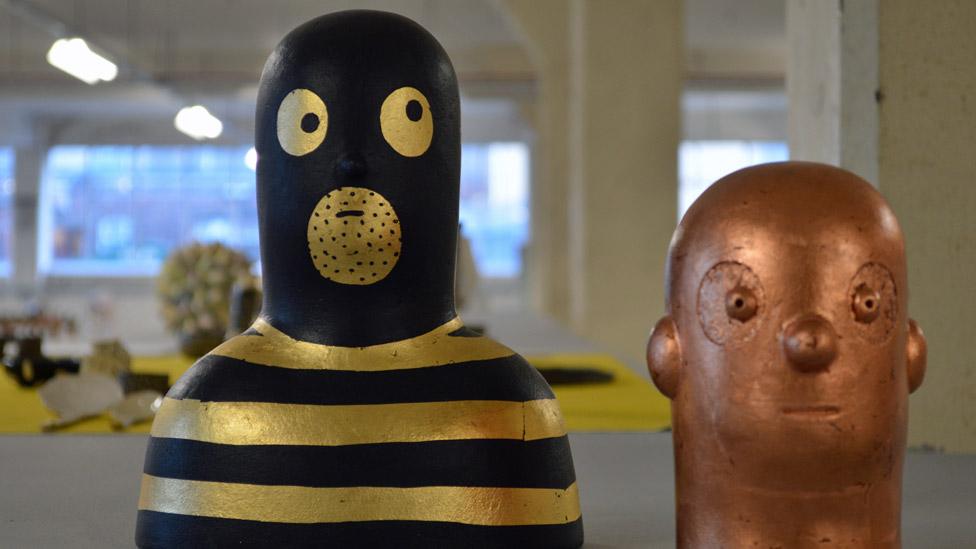
Vilas Silverton's Stripy Rogue and Shiny Head are reimagined spiritual idols
The China Hall looks very different now compared to the days when china was being made there, according to David Aspin, who worked in the factory for 45 years and is now acting as a volunteer at the biennial exhibition.
"It was very full," he says. "It was just the gangways that were empty. Everywhere else was full of machinery and people working on machines and things going in out - clay going into the machines and the finished item going into the next process.
"There was the noise from the kilns and it was very hot. They'd be making flat - all flat things like plates and soup plates and saucers - in this area, and in the other part, they'd be making cups."
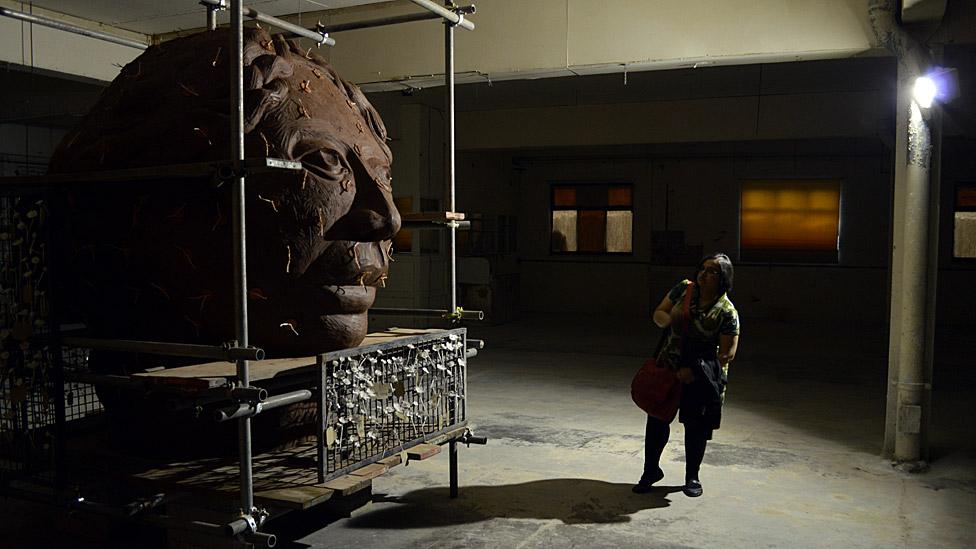
Resonate by Stephen Dixon and Johnny Magee
One of the centrepieces of the biennial is a First World War tribute in the form of a head based on the figure from the Victory Medal, and made from two tons of raw clay. Created by artist Stephen Dixon, it incorporates clay from the Passchendaele battlefield site.
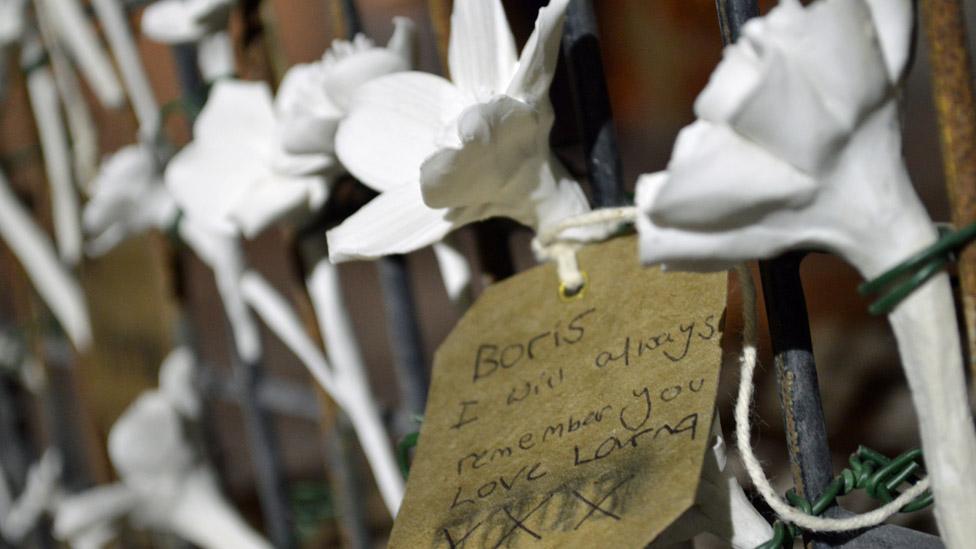
Resonate by Stephen Dixon and Johnny Magee
Visitors are invited to tie one of 5,608 bone china flowers onto the frame - one for every member of the North Staffordshire Regiment who was killed in the war - and write on attached tag.
Stoke was famous for its intricate china flowers. "There are still a lot of very skilful flower-makers," Dixon says. As part of the project, the flower-makers have also trained a new generation in the craft.
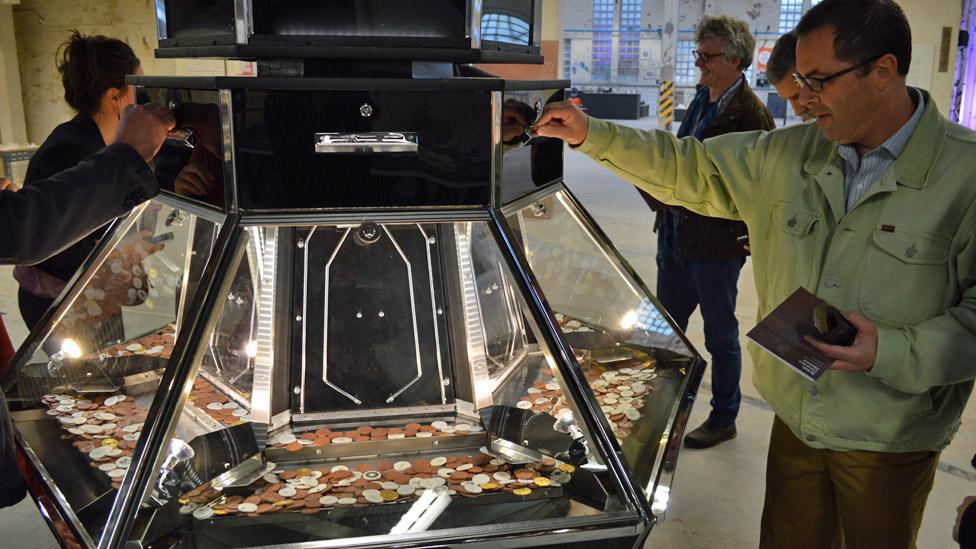
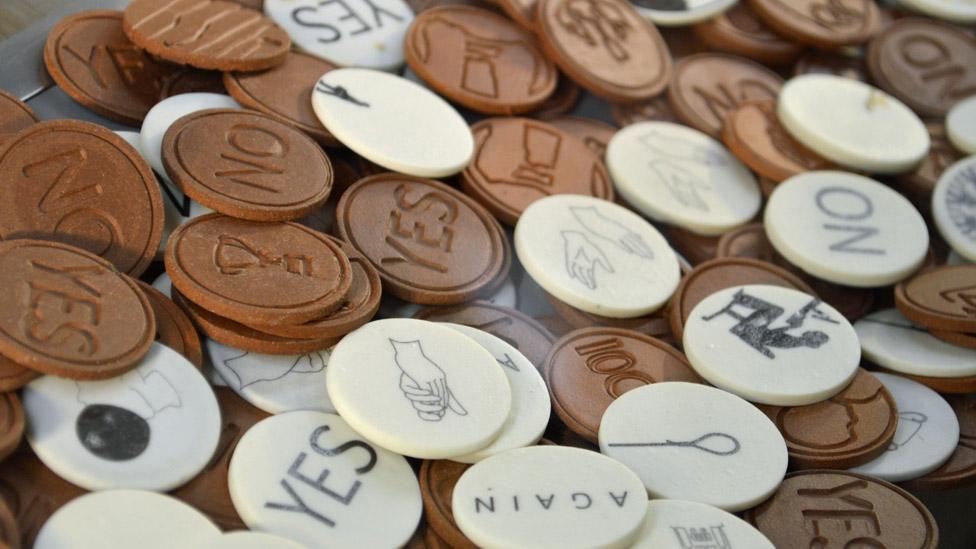
Again by Lawrence Epps
One of the most popular exhibits is Again, an arcade machine adapted by artist Lawrence Epps to take specially-designed ceramic coins.

Life, Death and That Moment In-between by James Duck
James Duck's ceramics vending machine offers visitors another interactive experience. Instead of chocolate bars or fizzy drinks, it offers pots - which are likely to smash when they are dispensed.
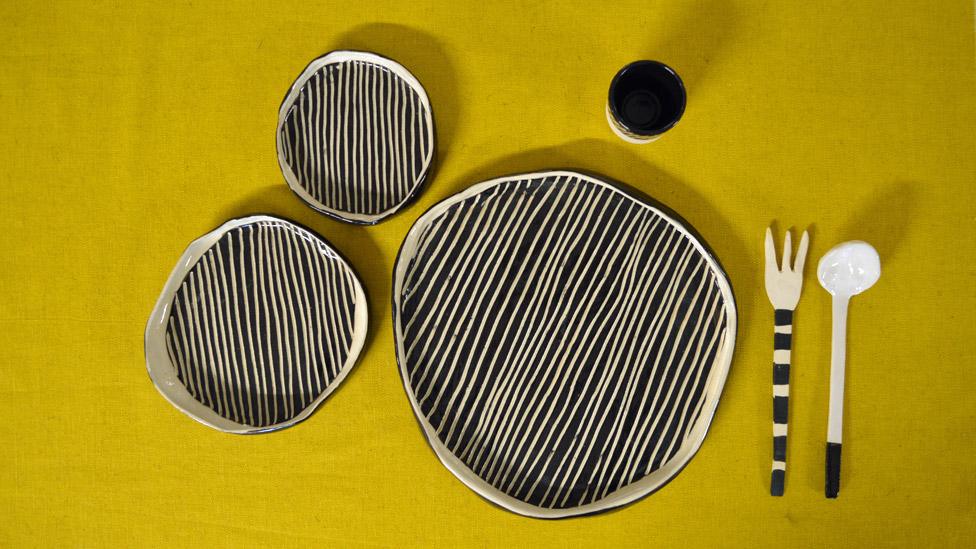
Dinner For West Princes Street by Katie Schwab
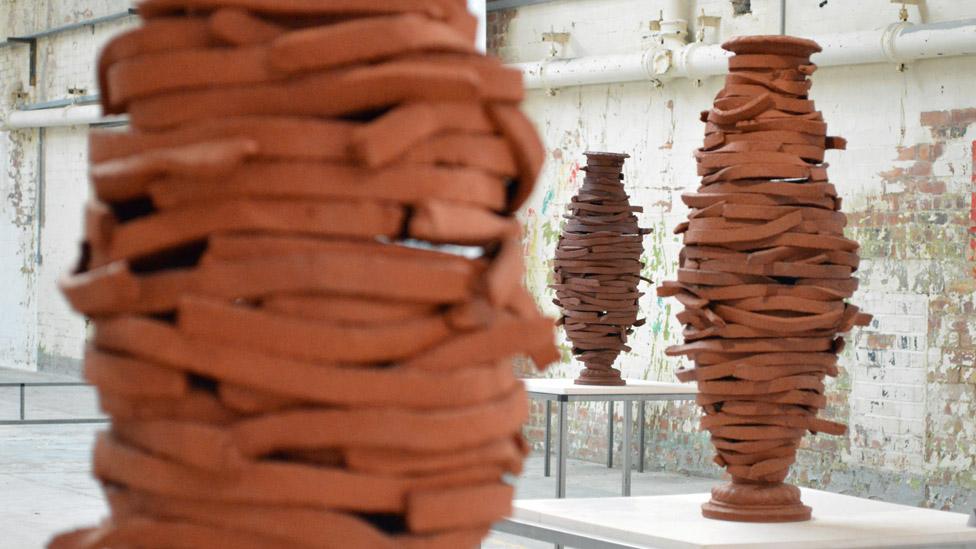
Mechanical Methods of Forming by Amy Hughes
At the height of the ceramics boom in the late 19th Century, there were around 2,000 kilns in the region, and the industry dominated the area's employment. By 1968, 62,000 people were employed in the industry in Stoke. That figure is now around 7,000.
The first British Ceramics Biennial launched in 2009 - a year after the Spode factory closed. Biennial artistic director Barney Hare Duke says: "It's fair to say manufacturing generally in the UK was struggling.
"So it seemed counterintuitive to be talking about setting up a festival celebrating ceramics, and to have the ambition of setting that up in Stoke-on-Trent. But, absolutely, it was the right moment.
"While there was the popular understanding that the industry was in decline, that wasn't the full picture. It was declining but not disappearing."
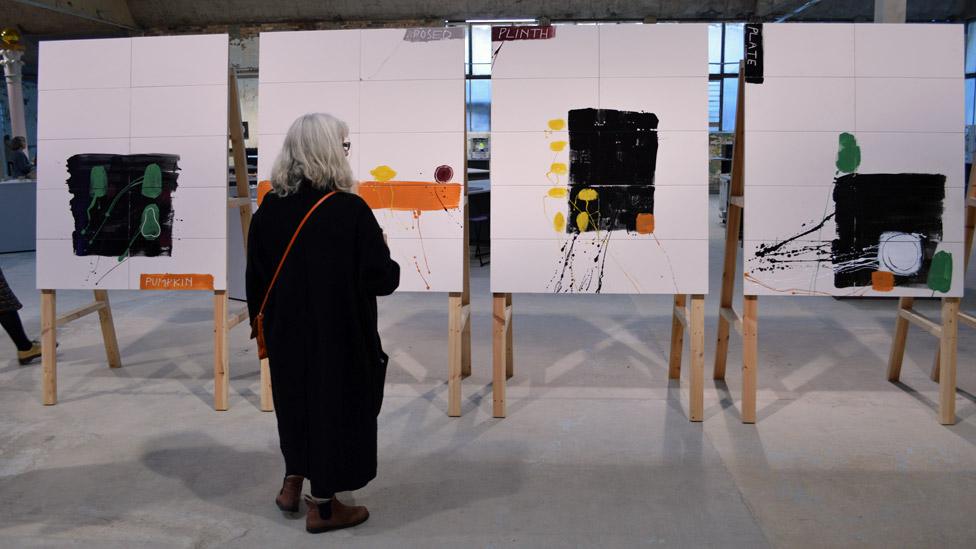

Set in Stoke by Bruce McLean
There has been a resurgence in interest in ceramic art in recent years, Hare Duke believes - thanks in part to artists like Grayson Perry, Ai Weiwei and Edmund de Waal.
"It has a much greater credibility and popularity than ever before and we're not only reflecting that interest and resurgence, but we're part of that momentum," he says.
A dozen artists have been chosen from 150 applications for the biennial's £5,000 award competition, while a separate strand features 22 graduates and young artists.
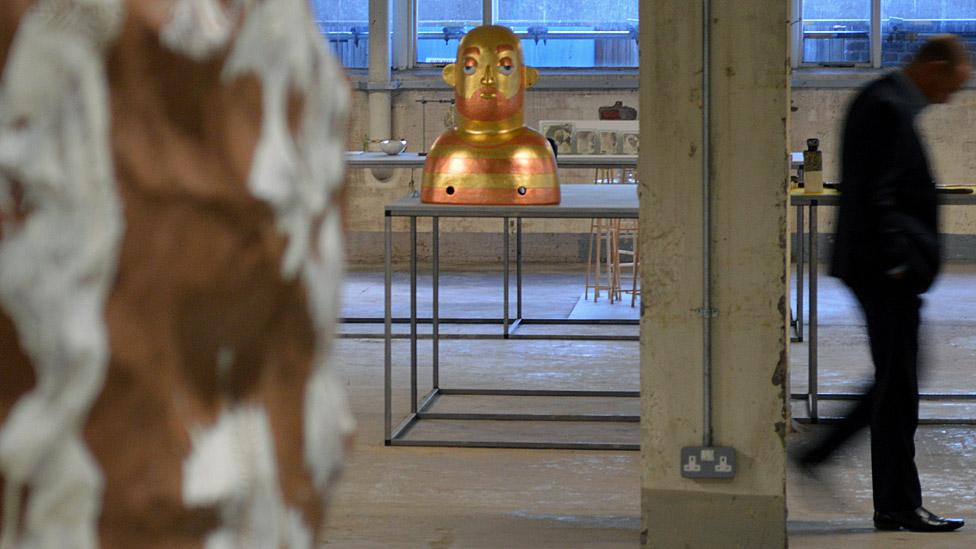
Nao Matsunaga (foreground left) and Vilas Silverton (centre)

Negativity Series by Gemma Dardis
Hare Duke adds: "We're trying to draw peoples' attention to the dynamism of contemporary practice - led by artists. It can inform thinking around manufacture and design innovation, as well as increasing people's critical understanding."
Local councils set up the biennial as part of their strategy for economic regeneration, he explains. "The really important thing about the long-term view they were taking was that ceramics was their future, not that ceramics was their past," he says.
The British Ceramics Biennial runs until 8 November.

Ragna Mouritzen's porcelain pieces are made using a 3D printer

Mella Shaw's work is in the centre of the old Spode China Hall
- Published27 September 2013
- Published9 November 2012
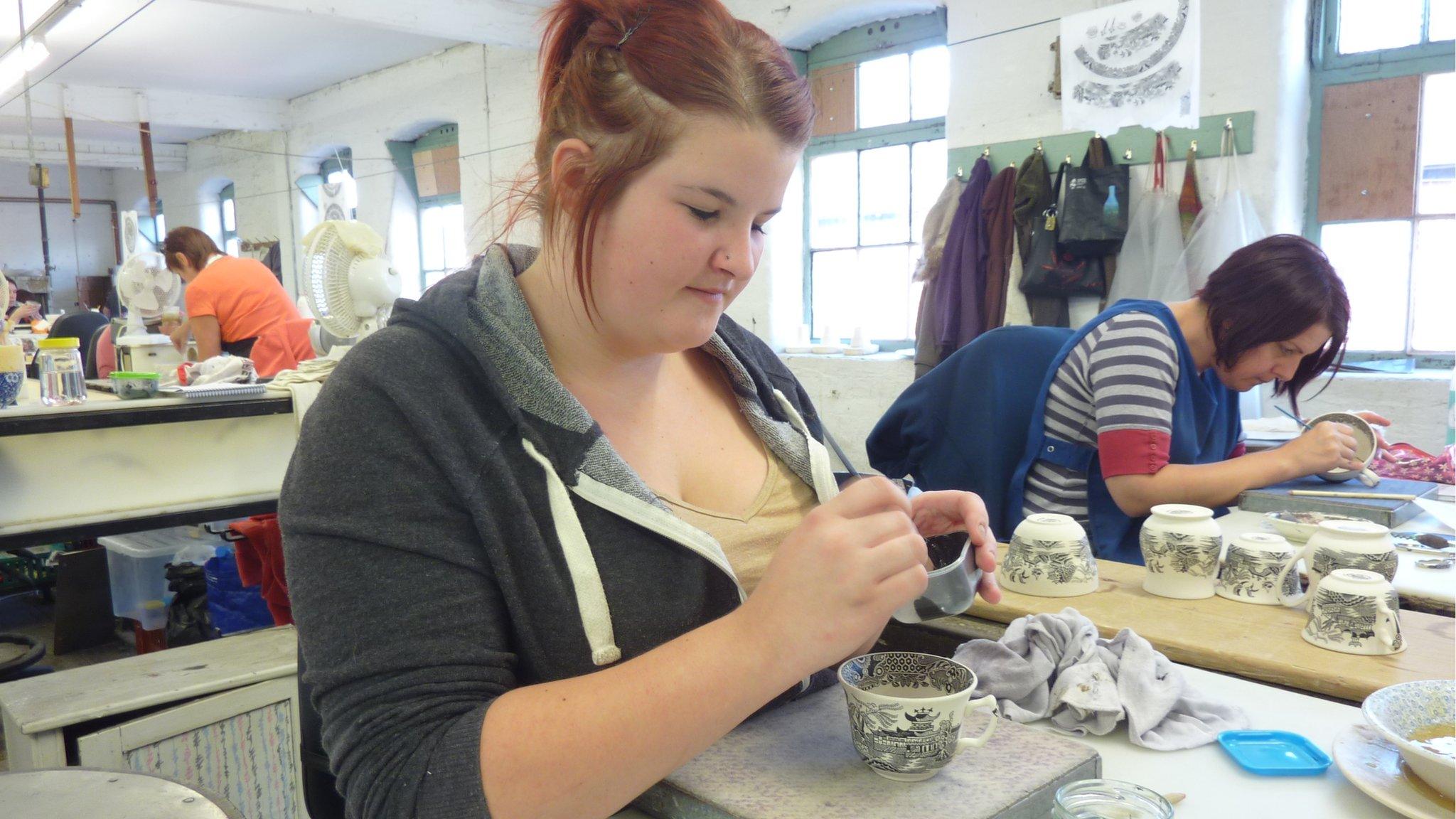
- Published9 November 2012
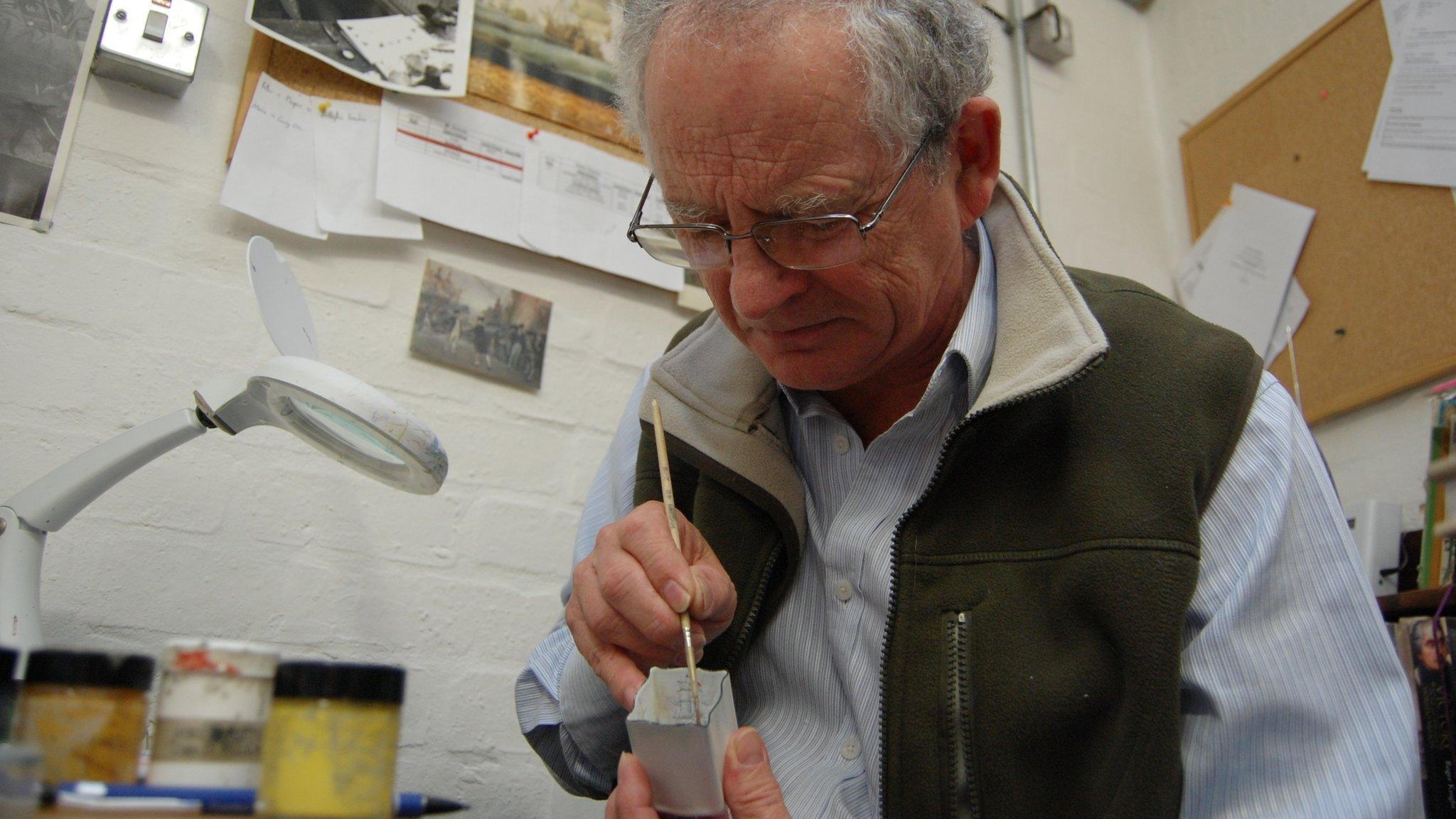
- Published28 September 2011
